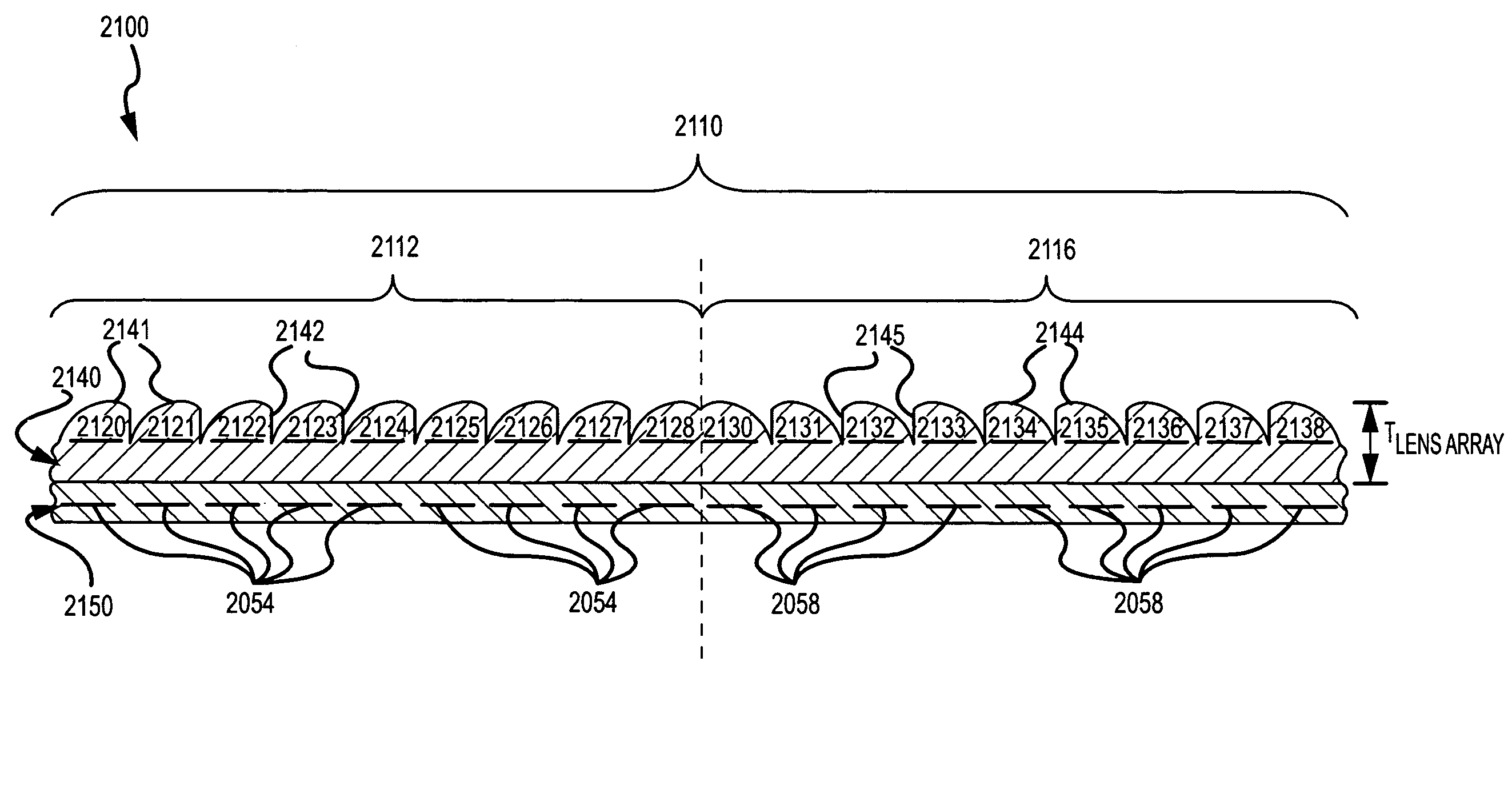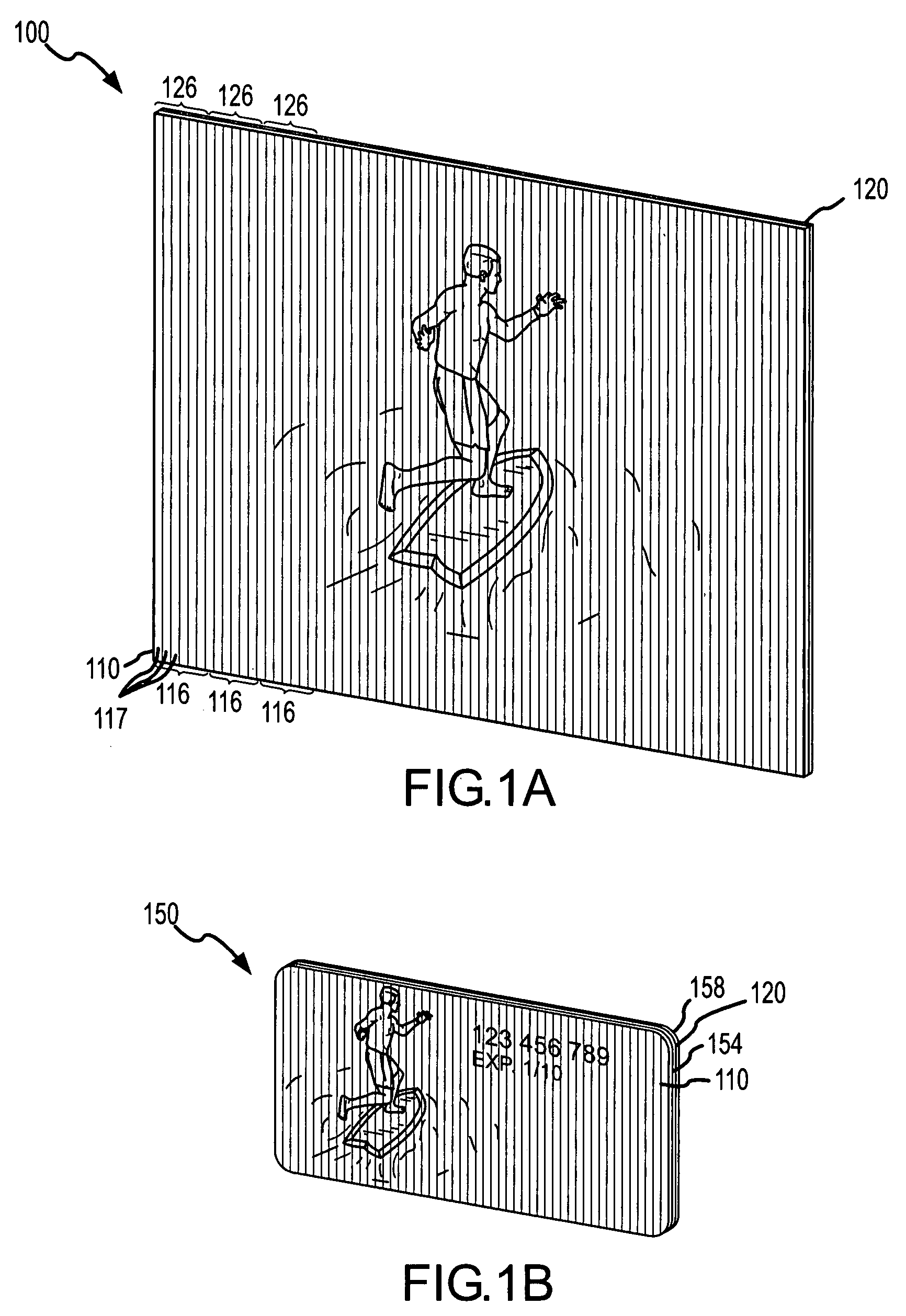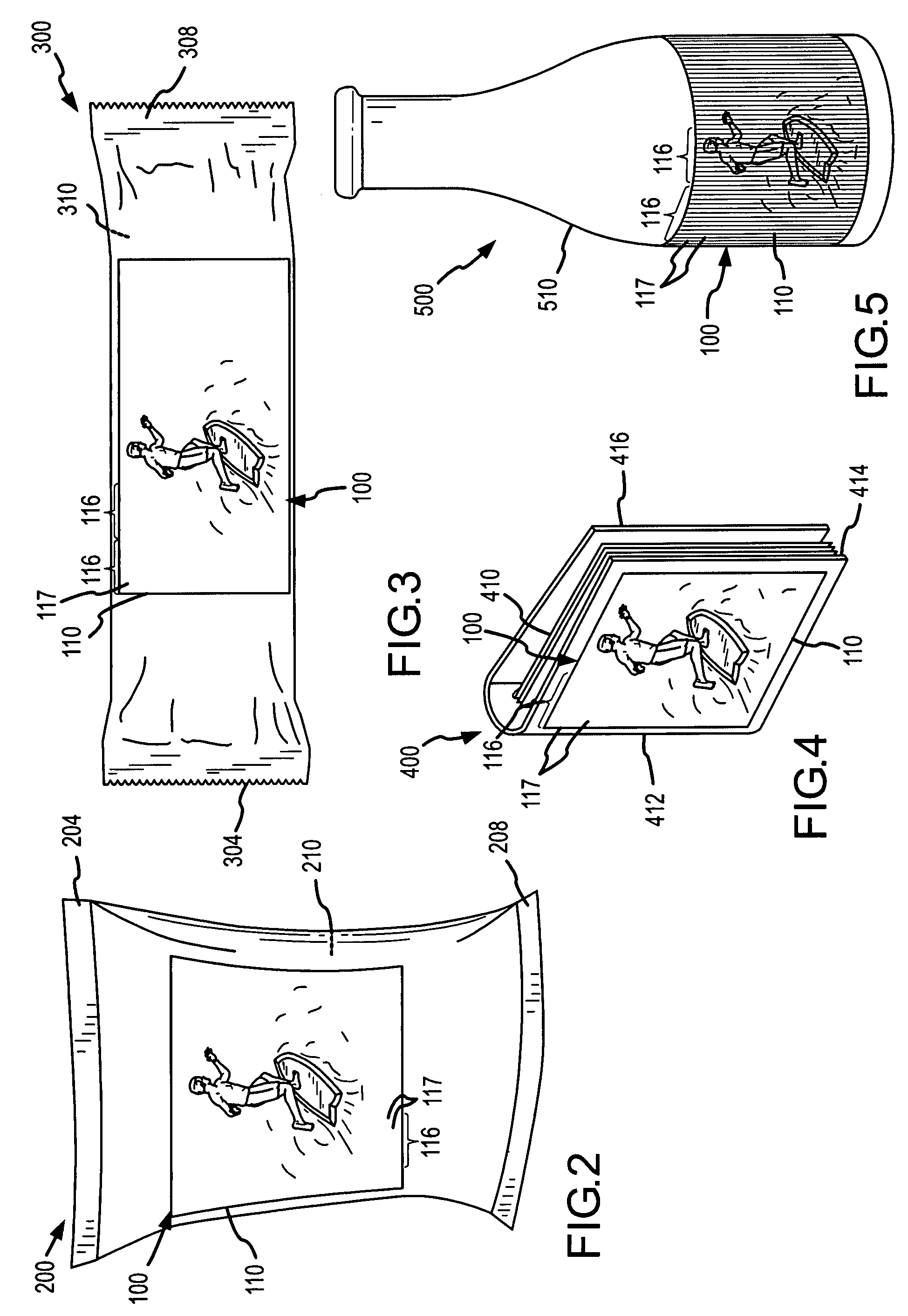Ultrathin lens arrays for viewing interlaced images with dual lens structures
a dual-lens array, ultra-thin technology, applied in the direction of projectors, viewers, instruments, etc., can solve the problems of reducing the thickness of the increasing the frequency of the lenticules in the array, and reducing the thickness of the lens or the lens array. , to achieve the effect of reducing the thickness of the lens
- Summary
- Abstract
- Description
- Claims
- Application Information
AI Technical Summary
Benefits of technology
Problems solved by technology
Method used
Image
Examples
Embodiment Construction
[0039]Briefly, the present invention is directed to lens arrays that can be used to reduce or even replace the use of conventional lenticular material. With conventional lenticular material, numerous elongated or linear lenticules or lenses are provided in a clear or translucent web or layers. Each lenticule is used to provide a viewing angle (e.g., 15 to 40 degrees or the like and more typically about 20 to 35 degrees) through which a plurality of interlaced slices of an image segment is visible to a viewer. For example, an interlaced image may be printed on the smooth side of the lenticular material web with the set of slices, which may number 5 to 20 or more, for a segment of the image being mapped to a particular lenticule such that the slices can be viewed separately as the material or the viewer's line of sight is moved across the viewing angle. The interlaced image with its interlaced image slices or elements can in this way be viewed to achieve visual effects such as 3D, ani...
PUM
 Login to View More
Login to View More Abstract
Description
Claims
Application Information
 Login to View More
Login to View More - R&D
- Intellectual Property
- Life Sciences
- Materials
- Tech Scout
- Unparalleled Data Quality
- Higher Quality Content
- 60% Fewer Hallucinations
Browse by: Latest US Patents, China's latest patents, Technical Efficacy Thesaurus, Application Domain, Technology Topic, Popular Technical Reports.
© 2025 PatSnap. All rights reserved.Legal|Privacy policy|Modern Slavery Act Transparency Statement|Sitemap|About US| Contact US: help@patsnap.com



